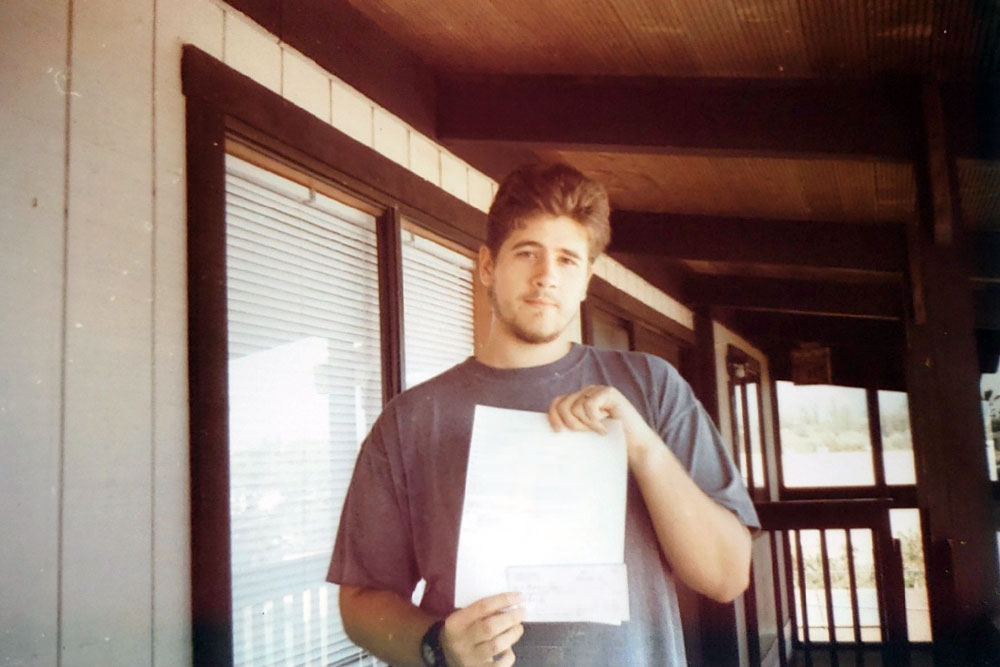In 1994, just after I got married, I started working on a DOS program for doing Bible searches. Yesterday, I released version 8.3 of this same program.
Of course, the original code I wrote in 1994 isn’t actually being used any more, but what originally was known as Bible Assistant was consistently re-worked and improved to eventually become the mature application today known as SwordSearcher.
Here’s a picture of me holding up the very first order form I ever received for my Bible software.

The order form is dated December 26, 1994. (I’m outside in a short sleeve shirt because I was living in Hawaii.)
At the time this photo was taken, my “real job” was digging ditches and working on septic systems. I didn’t know it back then, but my real job was really writing Bible software.
It took me another seven years to get to the point where I would no longer need to hold down side-jobs to pay the bills. In the early 2000s, I quit my job at RadioShack, where I helped customers find batteries and resistors for five years.
Since then I have spent most of the working hours of my days developing my own Bible software and working as an independent contractor on other people’s projects.
It only dawned on me last night, as I wrote up an announcement for version 8.3 of SwordSearcher, that I had been doing this for 25 years. What tremendous grace of God I have been shown – to be able to work on technology for studying the Bible for nearly my entire adult life!














